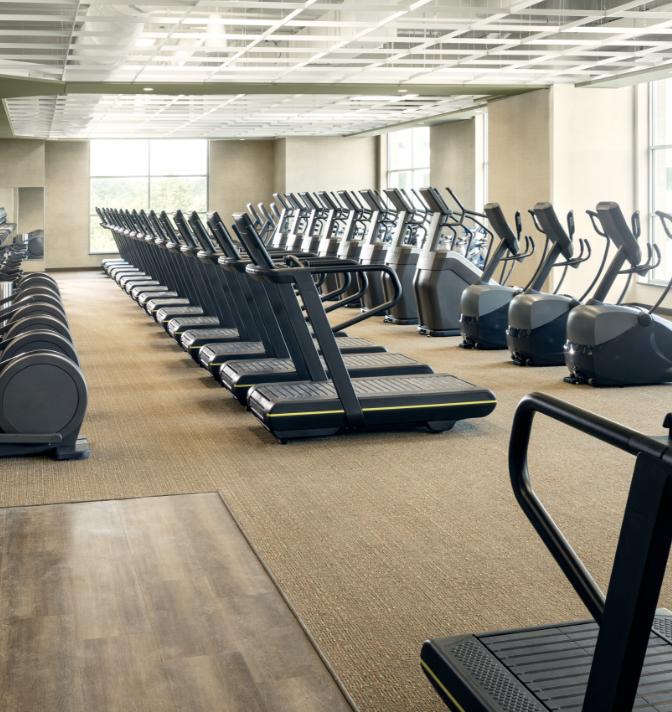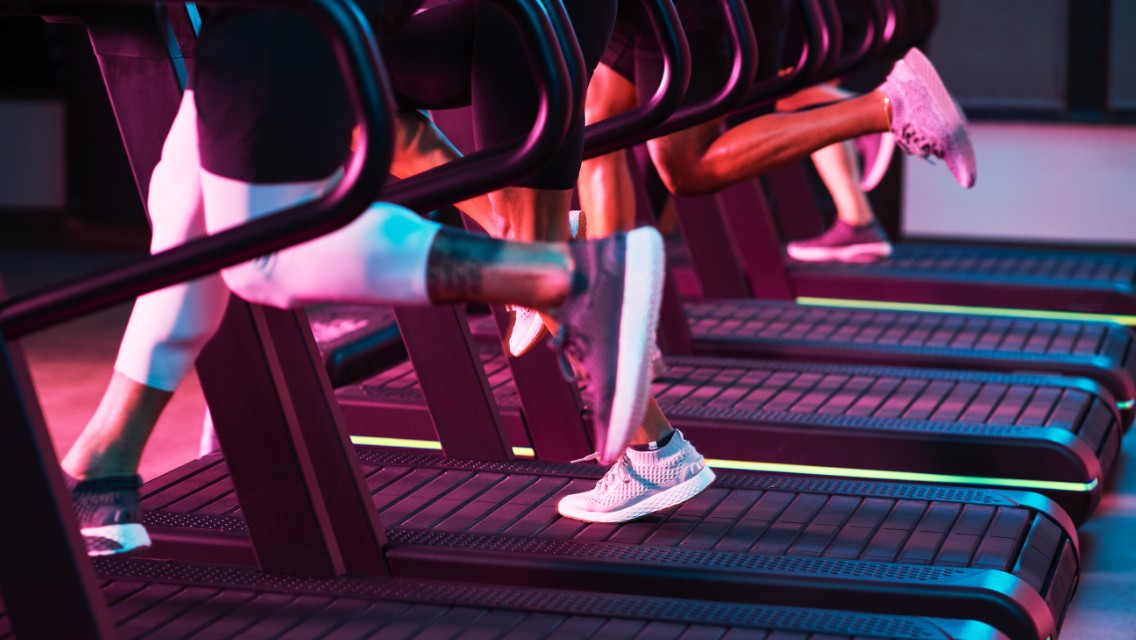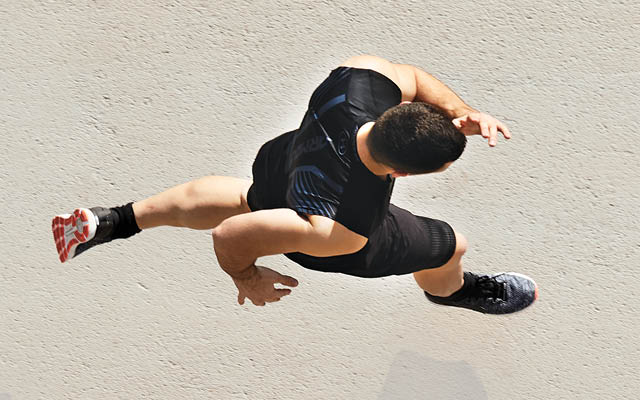Explore this article:
Moving your body daily is a great way to improve overall health. But to get the biggest bang for your buck, interval training is most often the way to go, and there’s one type that consistently delivers more results in less time: sprint interval training (SIT).
Chances are, you’re already familiar with interval-style training, likely in the form of high-intensity interval training. HIIT is characterized by short, fast bursts of intense activity interspersed with brief periods of rest. One popular form, known as Tabata, calls for eight 20-second rounds of high-effort work interspersed with 10 seconds of rest between rounds.
As the name implies, HIIT is high intensity, but it’s not an all-out effort. You push yourself to 80 to 85 percent of your maximum heart rate and then engage in rest intervals that are too brief to provide anything near a full recovery.
This is where SIT differs. Unlike HIIT, sprint intervals require an effort that approaches 100 percent, and the rest intervals are significantly longer than the bouts of work — think two to three minutes of easy recovery following a 10-second all-out sprint.
While this may sound like a luxurious amount of rest, it’s a fair match to the level of effort required. A true all-out sprint pushes you so hard that even a seconds-long burst leaves you needing the longer recovery.
If this sounds hard, that’s because it is. SIT is advanced, says Abrea Wooten, national education manager at Life Time. “It’s no joke. Sprinting is nature’s way of telling your body to toughen up and to rise to the occasion.”
The Science of Sprinting
There are several good reasons to sprint. It’s been shown to build muscle, improve hormone profiles, balance blood sugar, lower blood pressure, improve bone density, boost cognition, and reduce body fat. Data has even linked it to improved VO2 max and aerobic capacity, which translates to better performance during the longer, slower efforts required for endurance sports.
Research has also credited sprinting with increasing human growth hormone, which promotes cell regeneration and fat burning. Plus, sprinting bolsters testosterone, which supports metabolic health, contributes to muscle gain, supports cognition, and more.
Additionally, a regular SIT practice can improve mitochondrial biogenesis. Mitochondria, the microscopic power plants in your cells, convert food and body fat into energy, among numerous other functions.
Because of its intensity, SIT can supercharge mitochondria production by creating more demand for energy inside your cells. Large numbers of well-functioning mitochondria are associated with positive health outcomes as well as improved athletic performance.
Is SIT Right for You?
This all-out approach is a good match for a variety of people, says Wooten, including those who are training for athletic events, those who are short on time, and those who thrive on friendly competition.
For long-time exercisers stuck in a rut, sprints are a great way to mix up workouts by challenging the body and mind.
You can make significant strides with SIT, even if you’re new to sprinting. But if you’re a beginner with little to no training under your belt — and especially if you are just emerging from a more sedentary lifestyle — it’s best to sit this modality out until you build up your fitness level. (Those with health conditions will want to consult their healthcare providers to ensure that SIT is appropriate for them.)
Overall, SIT is best suited for the intermediate or advanced exerciser with at least two months of functional-training experience; this ensures their body can withstand the rigors of all-out sprints.
Getting Started
You can sprint on a track, on a bike, in the pool, on a rowing machine, and even by doing fast-paced squats. The key is to go as fast as you can, without sacrificing form, and to rest properly.
For most people, sprinting is synonymous with running — but don’t make the mistake of assuming that it is simply a matter of running fast, explains Mechelle Lewis Freeman, a 2008 track-and-field Olympian, USA Track and Field women’s relay coach, and the founder and codirector of TrackGirlz, a nonprofit organization that provides women and girls with access to track-and-field programs and a community of empowerment.
“With sprinting, your goal is to apply maximal force to the ground with every step to move energy as efficiently as possible,” she says. “Proper speed mechanics are essential to generating this force, as well as for avoiding injury, especially if you’re new to sprinting.”
To that end, a thorough warm-up and a sprint-specific training plan are imperative to make progress and avoid injury or burnout. Freeman designed the following eight-week plan for beginning sprinters.
Freeman’s SIT Workout
The Warm-Up
This seven-minute warm-up can help you develop proper sprint form.
(Click on the ▶ Name of each movement to open full instructions.)
Movement |
Movement Duration |
Rest Duration |
Sets |
Tall Kneeling Hip ThrustActivating your glutes and strengthening your neutral spine position (hips stacked directly under lumbar spine) help you generate maximal force with each step.
|
30 sec. | 15 sec. | 2 |
Body Walkout + PushupStimulating your core and stabilizer muscles is important for supporting proper sprint form. Adding the push-up activates your stretch reflex ability at your shoulder joints, which is important because the force from the upper body comes from the shoulder hinge, while driving the elbows back.
|
30 sec., split | 15 sec. | 2 |
Toe and Heel WalksToe and heel walks improve balance, address ankle stiffness, and strengthen the stretch reflex and your ability to maintain hip height with each foot strike. In sprinting, the push off the ground does not happen until you get on the ball of your foot, so it’s important to strengthen your ability to directly land in this position when striking the ground.
|
30 sec. | 15 sec. | 2 |
A-March and A-SkipThe A-March and A-Skip are dynamic drills that emphasize proper full-body sprint biomechanics. They are a great way to develop coordination and balance while promoting an efficient foot strike.
|
30 sec. | 15 sec. | 2 |
Pogo JumpsDoing this plyometric exercise improves your muscle elasticity, further developing your stretch reflex and your ability to apply force efficiently from the ground through your hips. This is a great way for runners to practice being fast and/or explosive off the ground.
|
30 sec. | 15 sec. | 2 |
Short SprintsUse these 5-second build-up sprints to gradually increase your speed to the pace you hope to achieve in your sprint intervals in that day’s work out.
|
5 sec. | 15 sec. | 2 |
The SIT Workout
Sprinting form, like running form more generally, is deeply individual and can vary greatly from person to person. That said, there are still best practices that every sprinter can keep in mind to make the most of their training.
- Run tall, in line from head to toe, gazing ahead at the horizon.
- Keep a 90-degree bend in your elbows and pump your arms front-to-back, not crossing in front of your torso.
- Keep the foot under the knee on touchdown to avoid overstraining, and land on the ball of your foot.
- Run with a slight forward lean and a high knee lift.
Learn more about running form at “Does Your Running Form Matter?”
Week |
Workouts/ Week |
Sprints/ Workout |
Sprint |
Walking Rest |
| 1 | 2 | 4 | 10 sec. | 3 min. |
| 2 | 2 | 4 | 10 sec. | 2 min. |
| 3 | 2 | 4 | 15 sec. | 3 min. |
| 4 | 2 | 4 | 15 sec. | 2 min. |
| 5 | 2 | 4 | 20 sec. | 3 min. |
| 6 | 2 | 4 | 20 sec. | 2 min. |
| 7 | 2 | 4 | 25 sec. | 3 min. |
| 8 | 2 | 4 | 25 sec. | 2 min. |
The Cool-Down
Finish your workout with an easy, three-minute jog followed by static stretches. Find a four-move cool-down sequence to jump-start your post-workout recovery at “4 Cool-Down Exercises.”
This article originally appeared as “Ready, Set, SIT!” in the July/August 2023 issue.






This Post Has 0 Comments